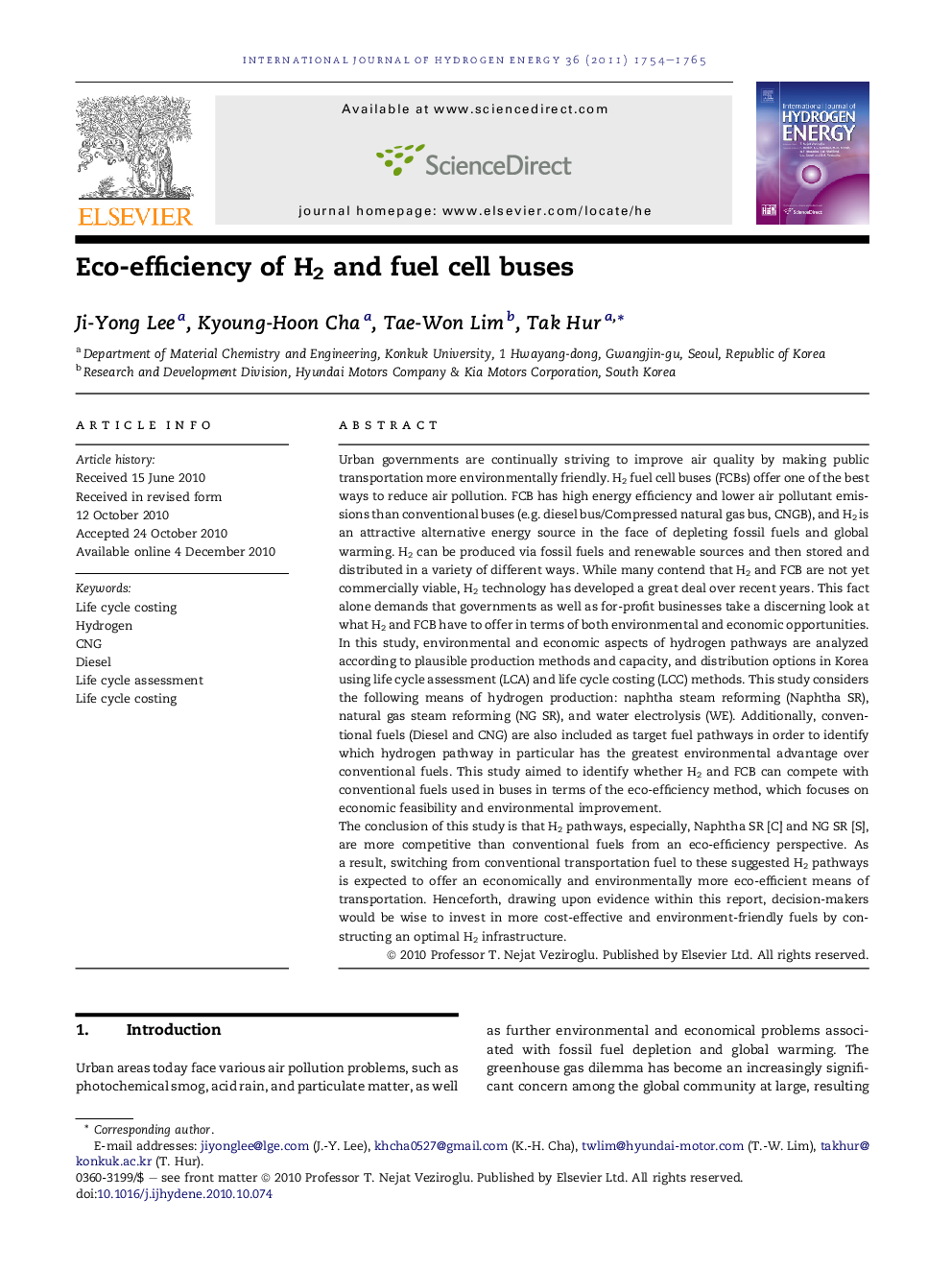| Article ID | Journal | Published Year | Pages | File Type |
|---|---|---|---|---|
| 1272342 | International Journal of Hydrogen Energy | 2011 | 12 Pages |
Urban governments are continually striving to improve air quality by making public transportation more environmentally friendly. H2 fuel cell buses (FCBs) offer one of the best ways to reduce air pollution. FCB has high energy efficiency and lower air pollutant emissions than conventional buses (e.g. diesel bus/Compressed natural gas bus, CNGB), and H2 is an attractive alternative energy source in the face of depleting fossil fuels and global warming. H2 can be produced via fossil fuels and renewable sources and then stored and distributed in a variety of different ways. While many contend that H2 and FCB are not yet commercially viable, H2 technology has developed a great deal over recent years. This fact alone demands that governments as well as for-profit businesses take a discerning look at what H2 and FCB have to offer in terms of both environmental and economic opportunities.In this study, environmental and economic aspects of hydrogen pathways are analyzed according to plausible production methods and capacity, and distribution options in Korea using life cycle assessment (LCA) and life cycle costing (LCC) methods. This study considers the following means of hydrogen production: naphtha steam reforming (Naphtha SR), natural gas steam reforming (NG SR), and water electrolysis (WE). Additionally, conventional fuels (Diesel and CNG) are also included as target fuel pathways in order to identify which hydrogen pathway in particular has the greatest environmental advantage over conventional fuels. This study aimed to identify whether H2 and FCB can compete with conventional fuels used in buses in terms of the eco-efficiency method, which focuses on economic feasibility and environmental improvement.The conclusion of this study is that H2 pathways, especially, Naphtha SR [C] and NG SR [S], are more competitive than conventional fuels from an eco-efficiency perspective. As a result, switching from conventional transportation fuel to these suggested H2 pathways is expected to offer an economically and environmentally more eco-efficient means of transportation. Henceforth, drawing upon evidence within this report, decision-makers would be wise to invest in more cost-effective and environment-friendly fuels by constructing an optimal H2 infrastructure.
